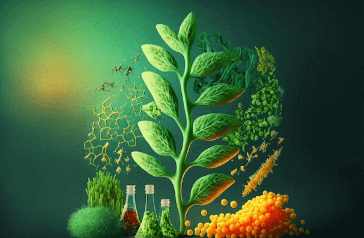Question
a.
Stromal cells
b.
Ectodermal cells
c.
Endodermal cells
d.
Mesenchymal stem cells
Posted under Tissue Engineering
Interact with the Community - Share Your Thoughts
Uncertain About the Answer? Seek Clarification Here.
Understand the Explanation? Include it Here.
Q. __________ are connective tissue cells that form the supportive structure in which the functional cells of the tissue reside.
Similar Questions
Explore Relevant Multiple Choice Questions (MCQs)
Q. The mesenchymal cells do not have the capacity to reconstitute an entire organ.
View solution
Q. The developing tooth bud of the mandibular third molar is a rich source of Mesenchymal Stem Cells.
View solution
Q. The youngest and most primitive MSCs may be obtained from umbilical cord tissue.
View solution
Q. Stem cells are present in amniotic fluid.
View solution
Q. _________________ is the most frequently utilized source of Mesenchymal stem cells.
View solution
Q. MSCs possess antipyretic properties.
View solution
Q. Hematopoietic stem cells (HSCs) are the stem cells that give rise to other blood cells.
View solution
Q. Which of the following are not myeloid cells?
View solution
Q. Hematopoietic stem cells give rise to different types of blood cells, in lines called myeloid and lymphoid.
View solution
Q. Which of the following are not lymphoid cells?
View solution
Q. Hematopoietic stem cells are found in the lungs of adults.
View solution
Q. Hematopoietic stem cells cannot be isolated as a pure population.
View solution
Q. Hematopoietic stem cells lack the expression of mature blood cell markers.
View solution
Q. Hematopoietic stem cells, like all adult stem cells, mostly exist in a state of ____________ or reversible growth arrest.
View solution
Q. ____________ strand breaks accumulate in long term Hematopoietic stem cells during aging.
View solution
Q. _________ is a gelatinous substance within the umbilical cord.
View solution
Q. Wharton’s jelly is a potential source of ________
View solution
Q. Wharton’s jelly may contain some fibroblast and ___________
View solution
Q. As a mucous tissue, Wharton’s jelly protects and insulates umbilical blood vessels.
View solution
Q. Wharton’s jelly is derived from extra-embryonic ____________
View solution
Recommended Subjects
Are you eager to expand your knowledge beyond Tissue Engineering? We've handpicked a range of related categories that you might find intriguing.
Click on the categories below to discover a wealth of MCQs and enrich your understanding of various subjects. Happy exploring!








